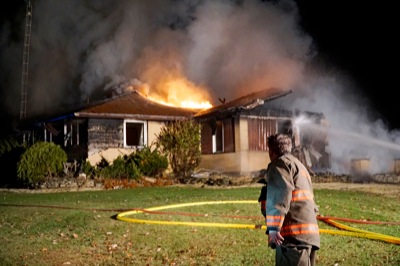Tuesday, November 21st, 2017
Electric rate change up for approval
Celina
By William Kincaid
CELINA - For the first time since 2004, city council members intend to change the base electricity rates to be more fair to all customers, stabilize revenue, reflect projected power costs and provide funds for anticipated capital expenditures.
At Monday night's special meeting, council members unanimously passed second reading of legislation establishing new rates for electric energy sales and consumption within the city's electric utility system. Final reading is set for 7 p.m. Monday in council chambers on the second floor of the city administration building.
"The cost to the city is going up 3.5 percent a year over the next four years. That's supply costs," mayor Jeff Hazel said before the meeting.
Residential customers can expect to see a modest increase in their monthly electric rates over the next few years while industrial-rate class customers would see a decrease.
The residential increase, however, would be phased in over four years. The average monthly residential bill within the city based on 700 kilowatt hours is $77.21, city safety service director Tom Hitchcock told the newspaper before the meeting.
That bill would be about $76.87 in 2018, $79.83 in 2019, $82.72 in 2020 and $85.72 in 2020, Hitchcock pointed out.
Rate classes include residential, both inside and outside the city; commercial non-demand and demand; small general power; general power; contract power service; educational; industrial substation service; and municipal commercial service.
"There's a different cost to serve each class of electric customer," Hazel said.
Residential urban customers would pay a monthly base charge of $8. That would rise incrementally to $14 a month by 2021. During that same time period, kilowatts per hour would increase from 0.098 cent to 0.102 cent. Residential rural customers would pay a monthly base customer charge of $8.40. That would rise incrementally to $14.70 a month by 2021. During that same time period, kilowatts per hour would increase from 0.103 cent to 0.107 cent.
Industrial urban customers on the other hand would pay a monthly base customer charge of $200. That would rise to $500 a month by 2021. During that same time period, kilowatts per hour would decrease from 0.0462 cent to 0.0267 cent per hour. They would also be charged a monthly demand charge.
To help keep rates relatively stable over the next four years, council members are also creating legislation to authorize city administrators to borrow up to $1.6 million through Dec. 31, 2022, through American Municipal Power, a nonprofit organization that manages and supplies wholesale energy to its member communities. Final reading of legislation to enter AMP's rate levelization program is also set for 7 p.m. Monday.
"Because of fluctuations in the cost of power and energy, weather patterns and usage by customers, the city and its customers experience variations in their monthly power costs," the ordinance reads. "Such variations increase the difficulty of projecting cash flow needs for the city's electric system and can cause unpredictable and undesirable variations in consumers' bills."
The proposed rate change is part of an overall plan to balance the city's power costs through 2022.
For years, the city's base electricity rates have remained unchanged. However, during the same period, the Energy Acquisition Adjustment fee has crept up to counter increasing fuel, power, supply and wholesale costs the city must absorb as a municipally owned electric system.
"We took a pretty substantial hit on electric because of power supply. We've been trying to balance it with the EAA for ... the last several years," Hazel said.
Anytime the power costs have gone up, whether because of increasing supply or transmission costs, the EAA has been raised to absorb the extra cost of providing power to city customers, Hazel noted.
"That is the reason why we have not had to go back and adjust rates," Hazel explained. "In some cases the EAA bill is getting almost nearly as much as the electric bill itself."
It's hard to equitably apply the EAA rates to all customers, with the higher-end customers such as industries paying exponentially more than residents, Hazel said.
The EAA in 2017 was set at 0.03896 cent per kilowatt hours and is expected to bring in more than $9 million of the city's total anticipated electricity revenue of $23 million..
Under the pending rate plan, the EAA would be reset to zero while the rate structures and calculation formulas for specific customer groups would change to more fairly reflect the actual cost of service, officials said.
In 2017, the city is expected to take in $23 million in electric utility revenue and expend $23.66 million, ending the year with a $6.46 million operating fund.
Officials also anticipate an average yearly cost of $984,100 to make electricity-related capital improvements from 2017 to 2021.
Hazel also pointed out that unlike investor-owned utilities, the city owns its municipal electric systems and secures power from numerous sources, mainly from AMP.
"We provide within the rates. We give (customers) meter bases. We give them the electric lines to go to their buildings. We give transformers to businesses that need transformers. You don't get that with an IOU, they charge you for that," Hazel said. "That's all included in (our) rates."



